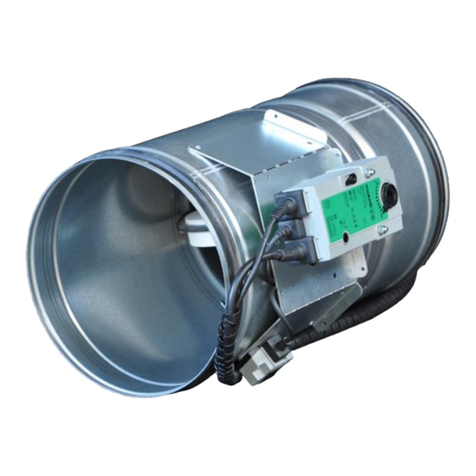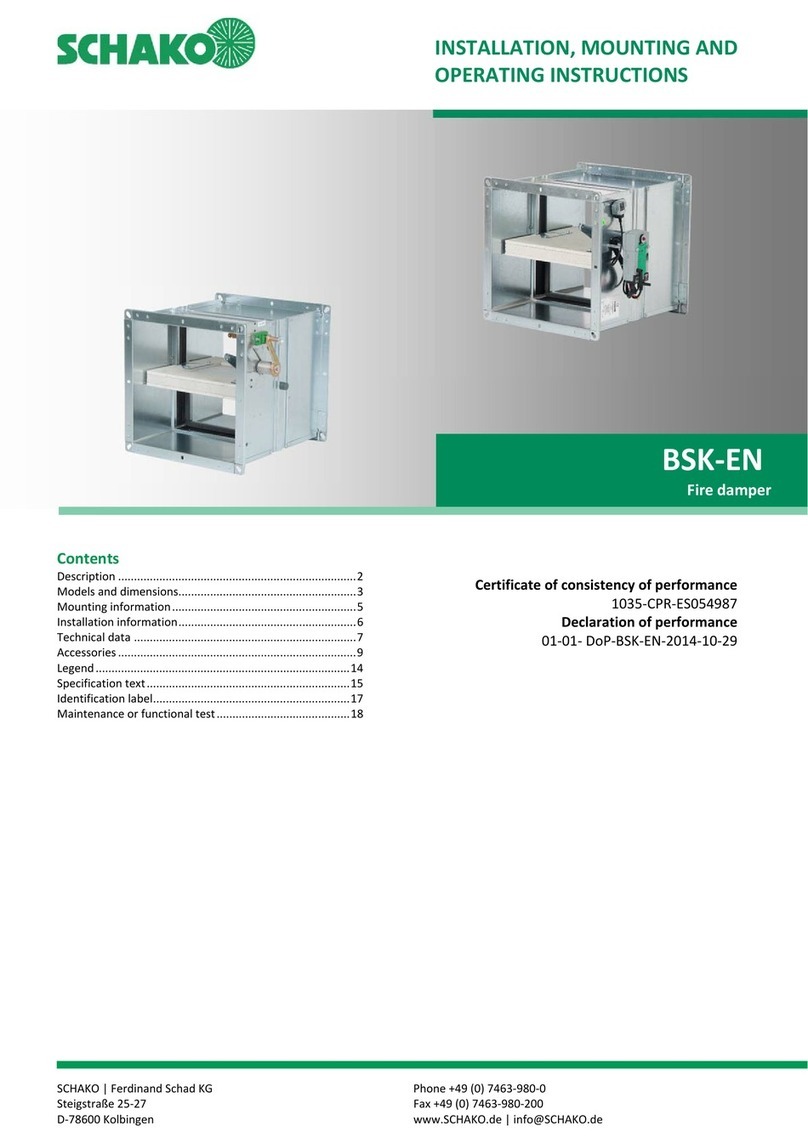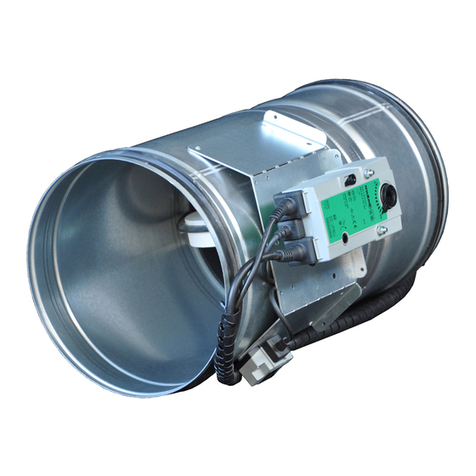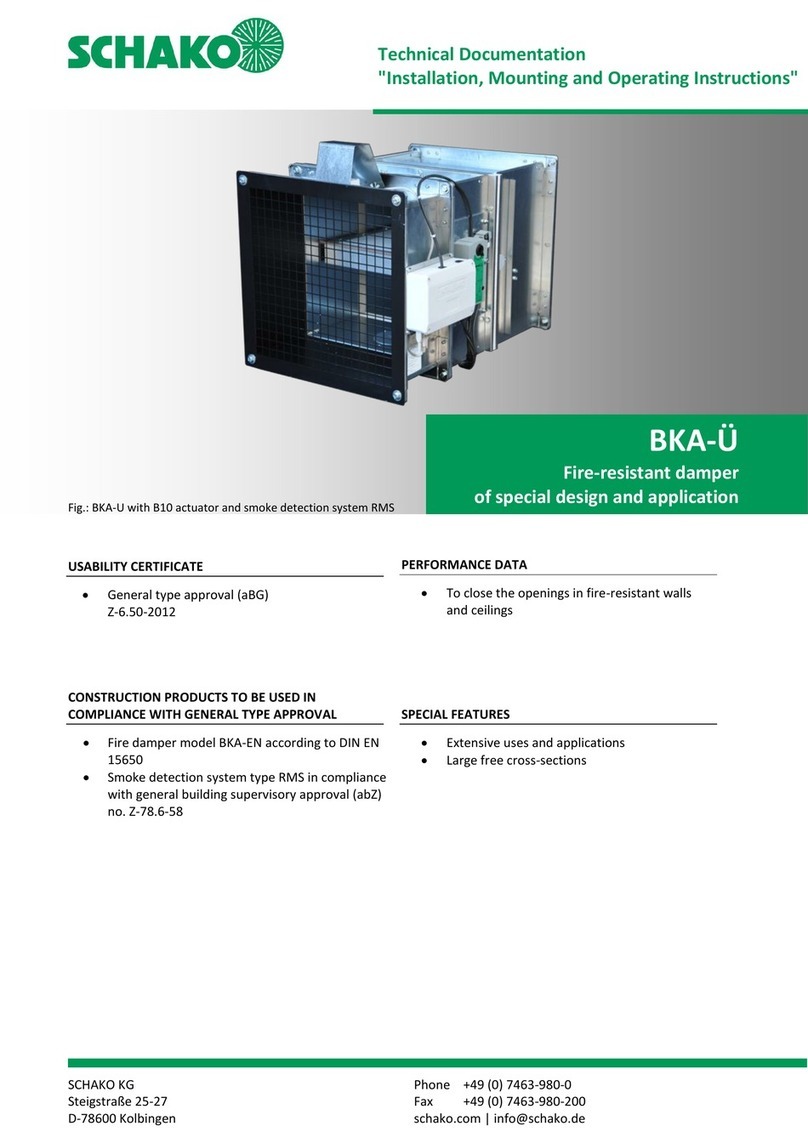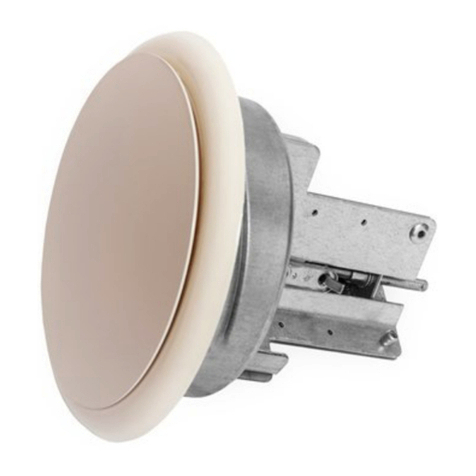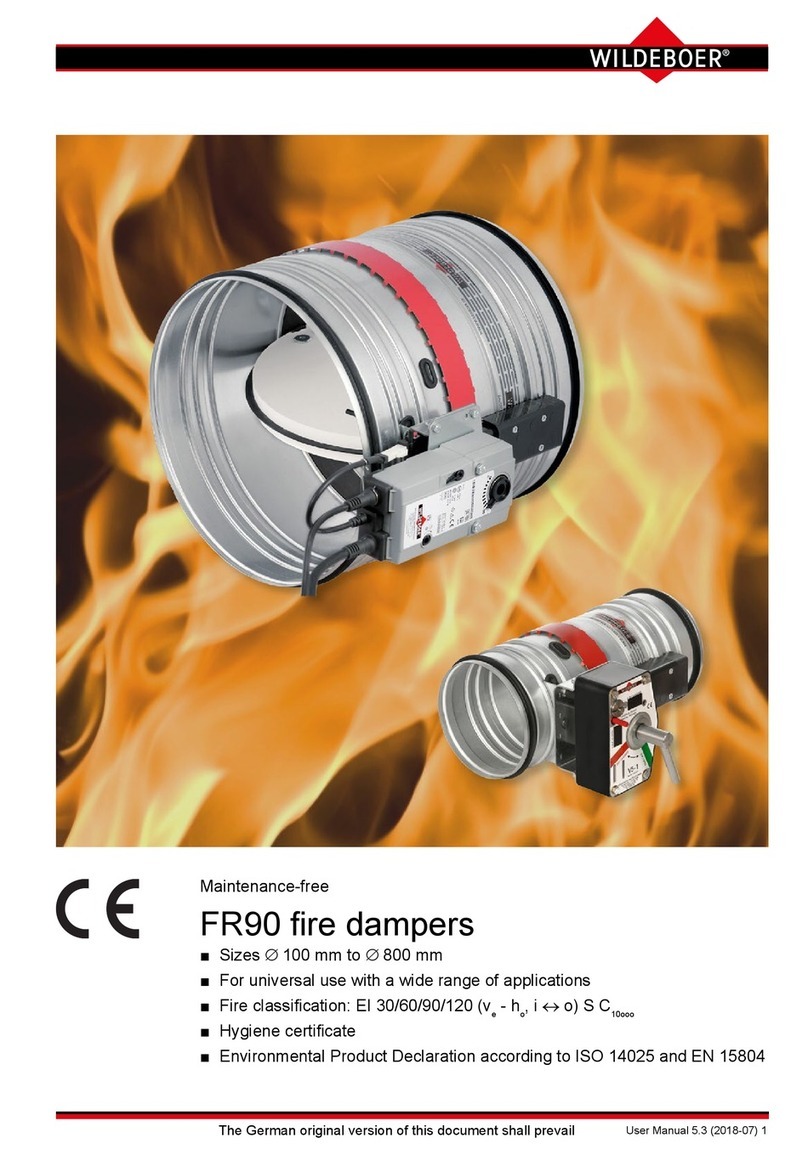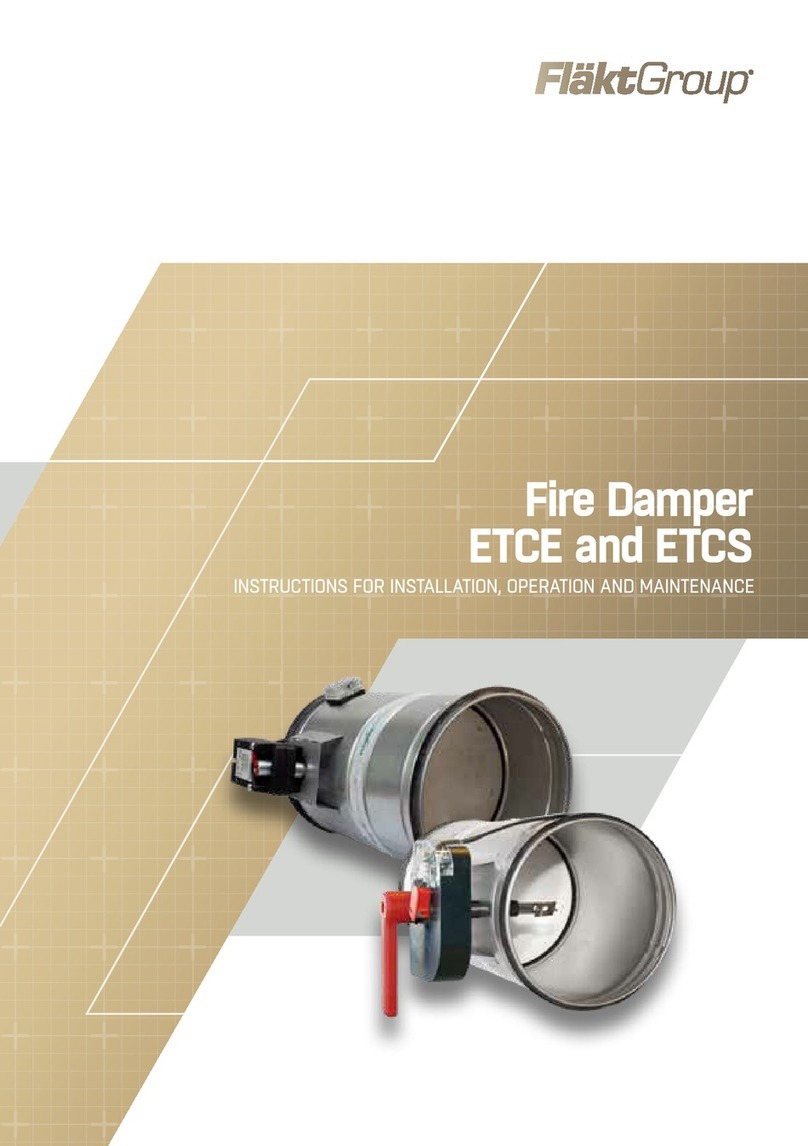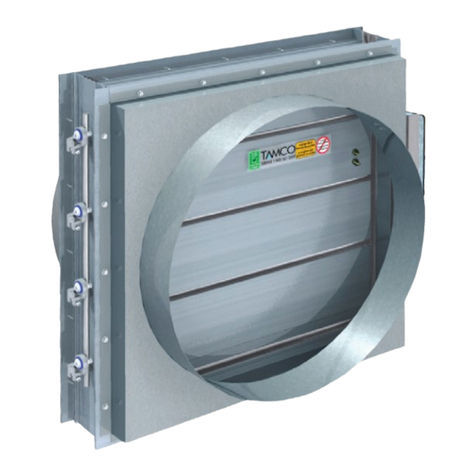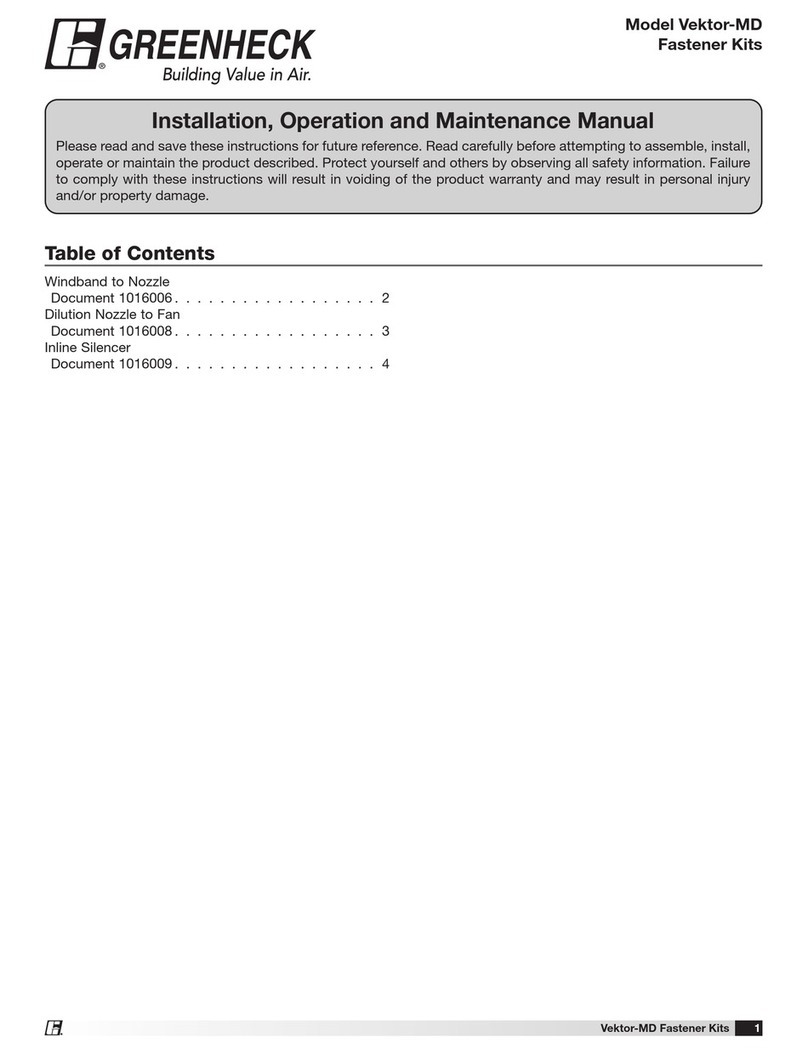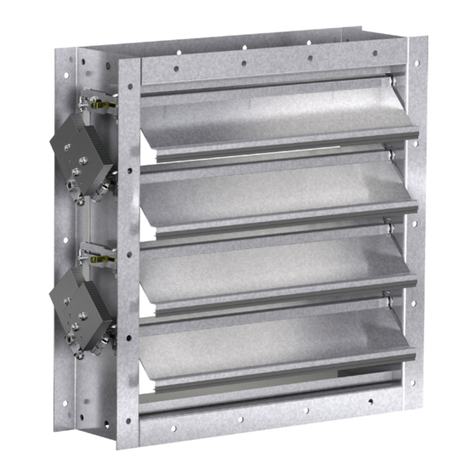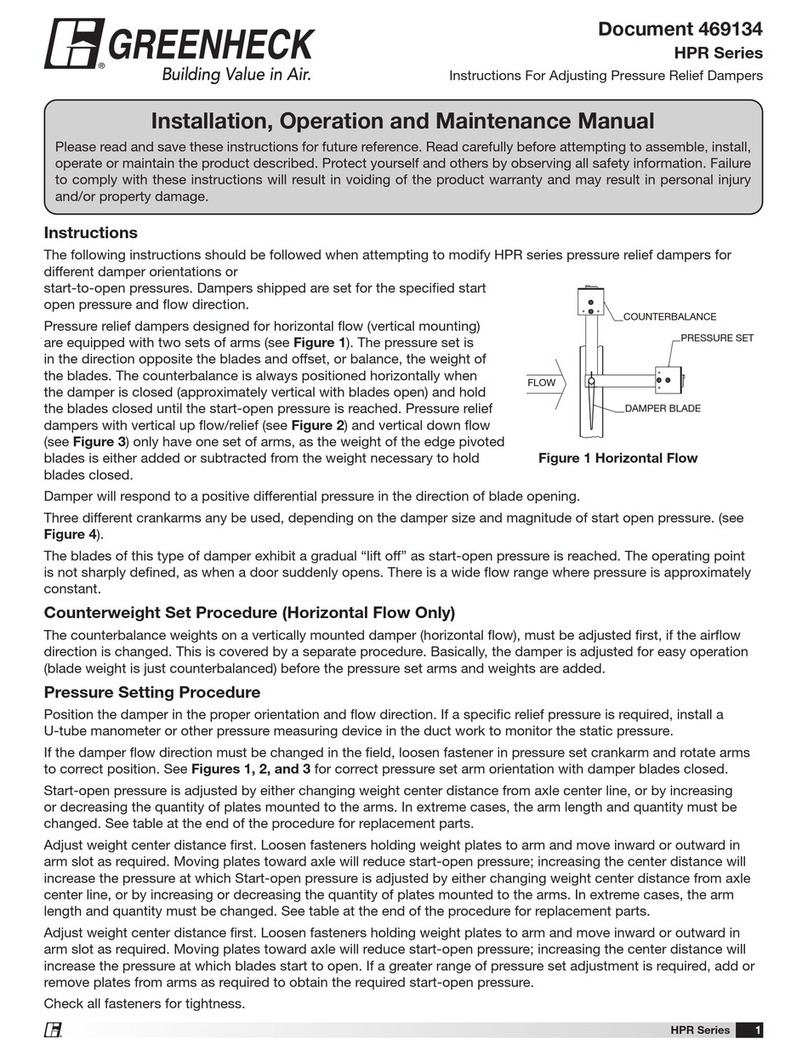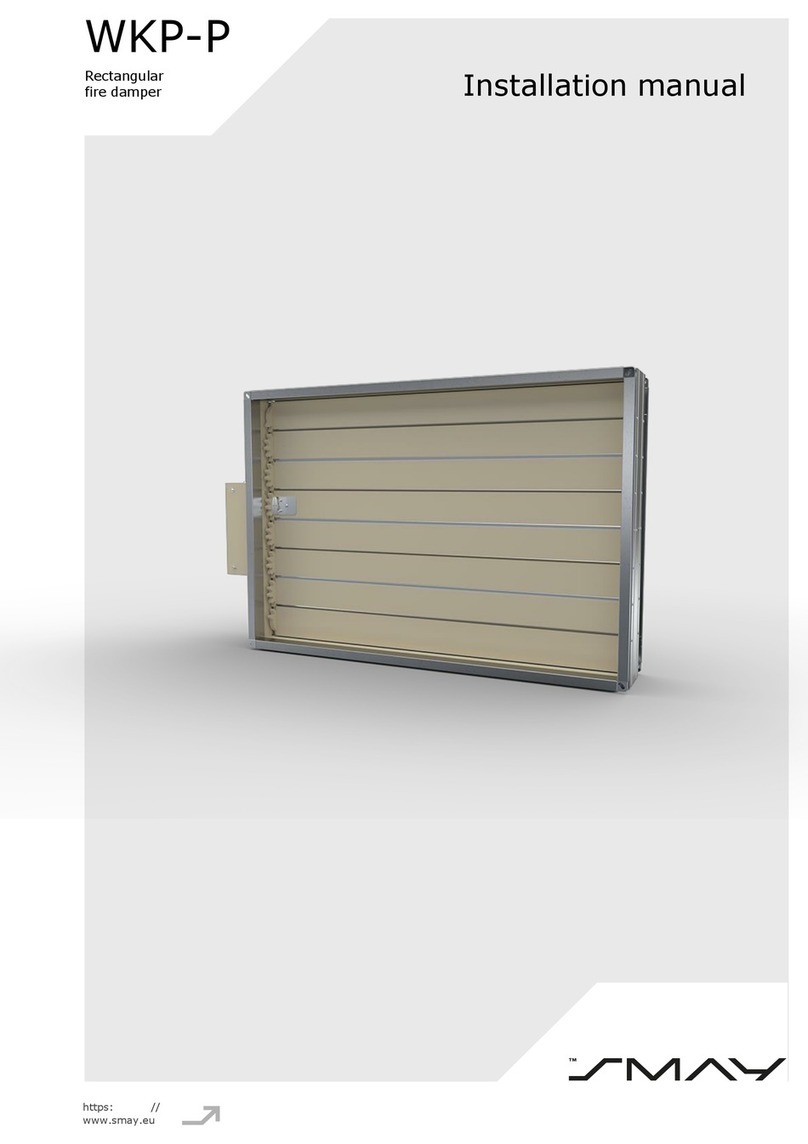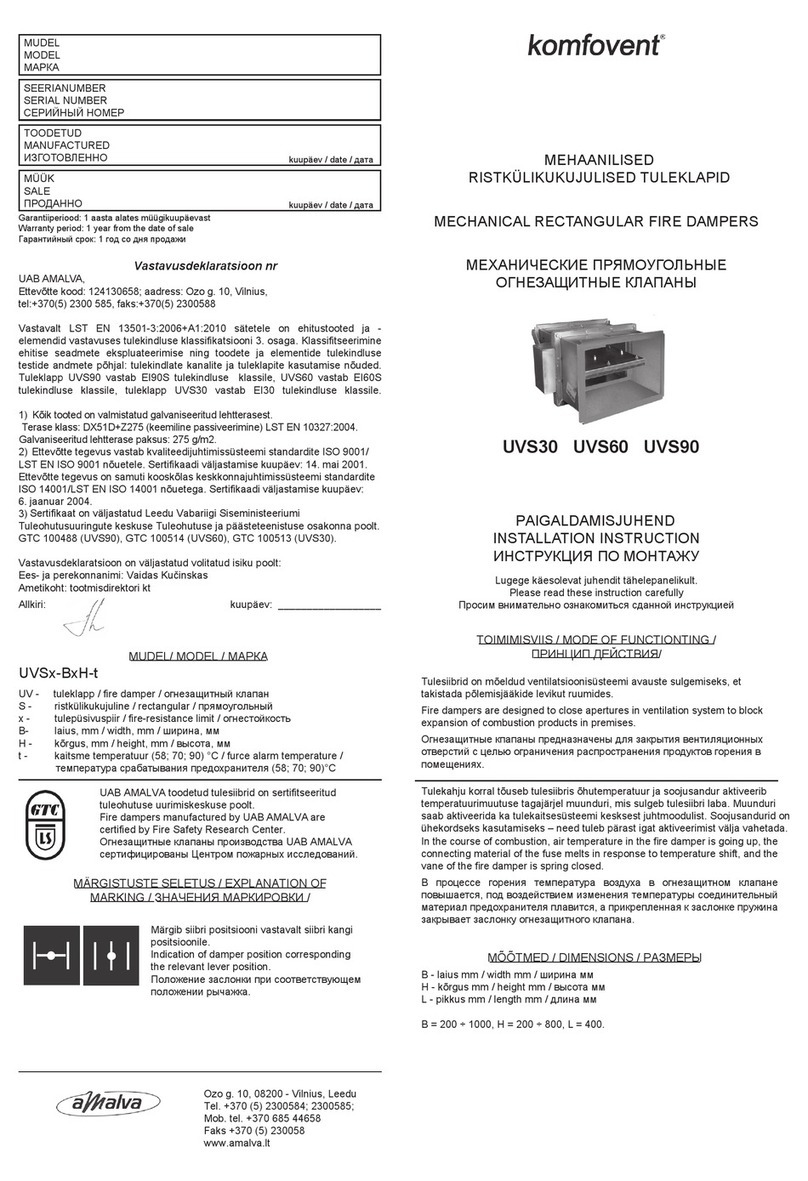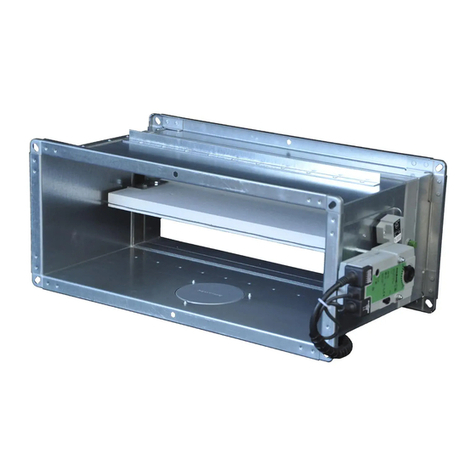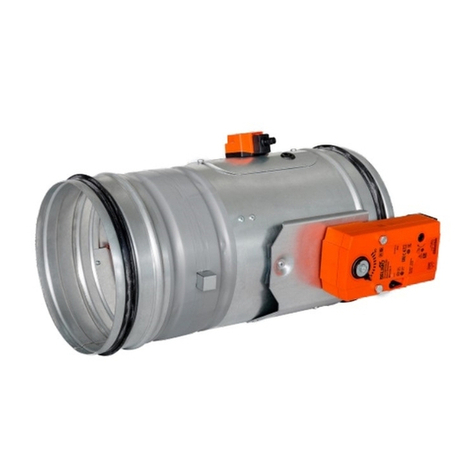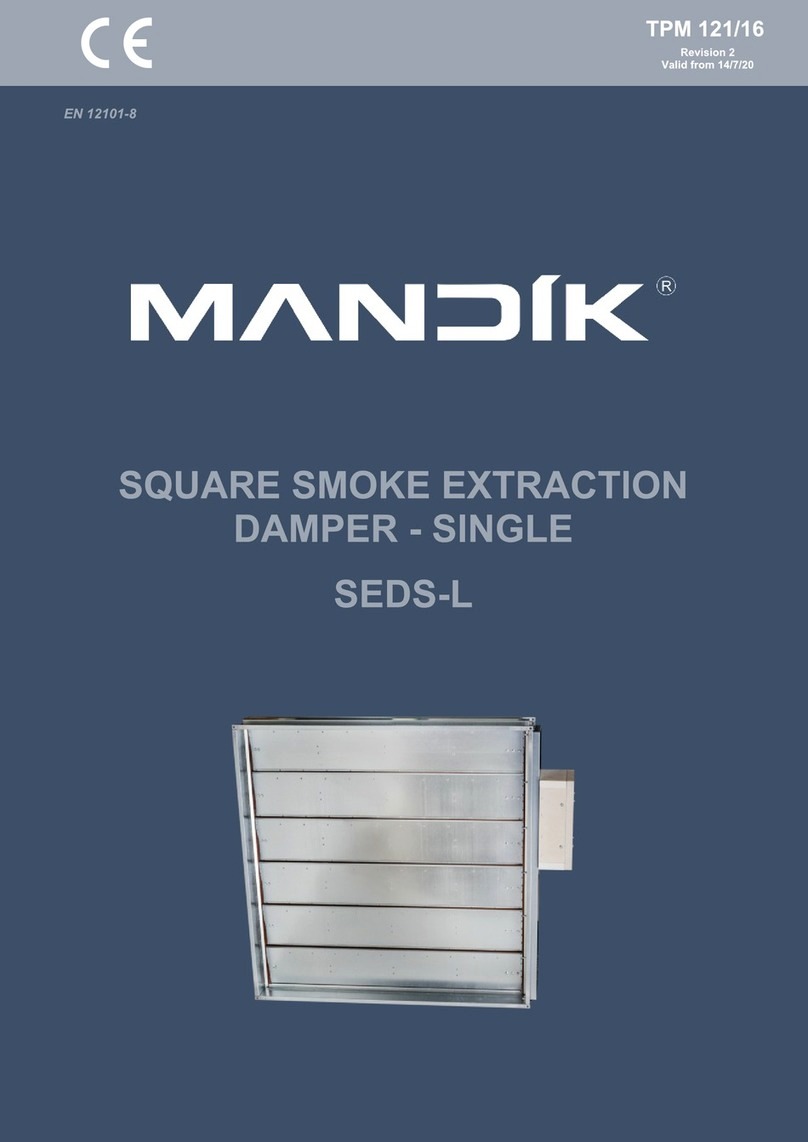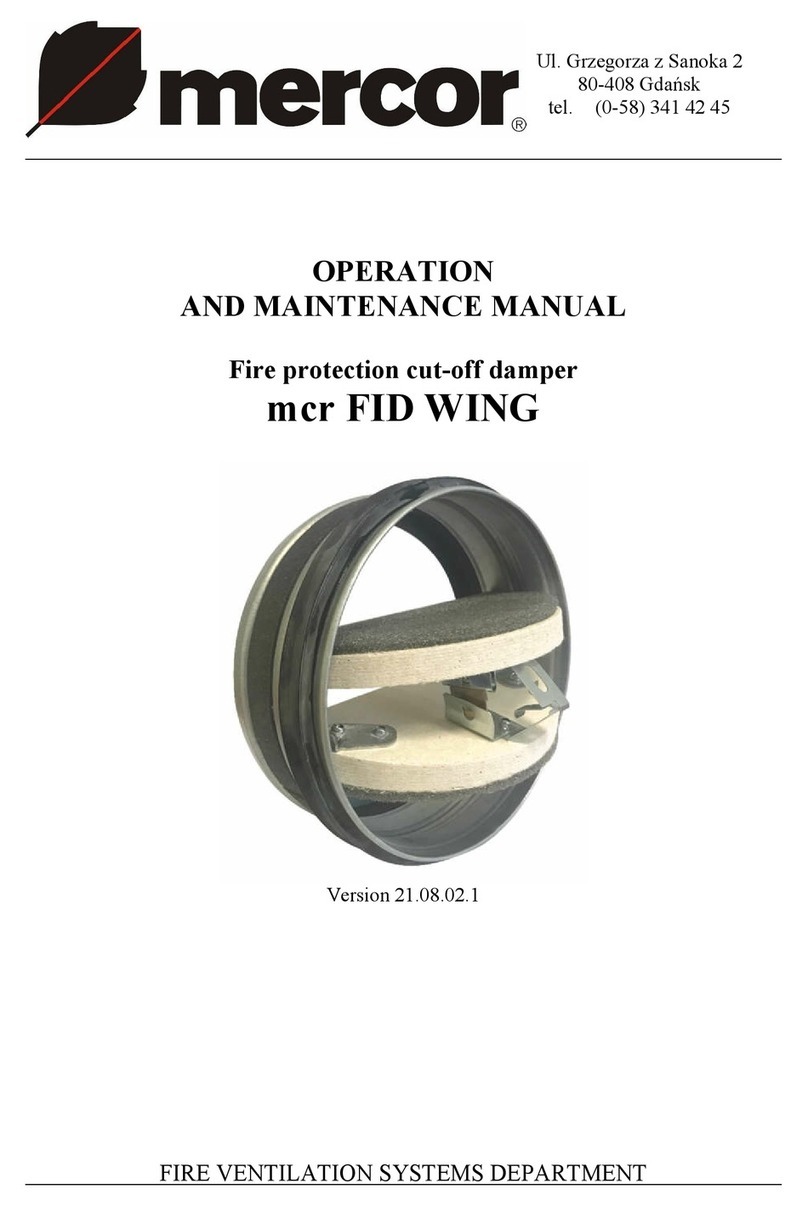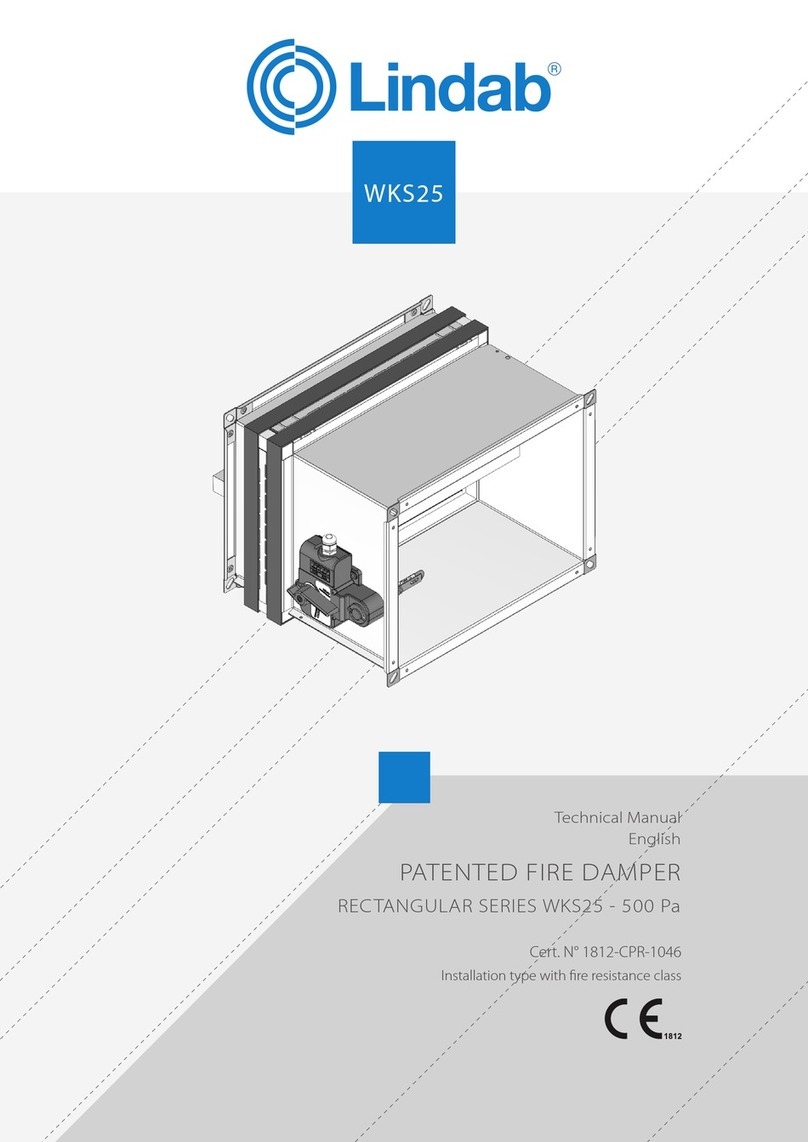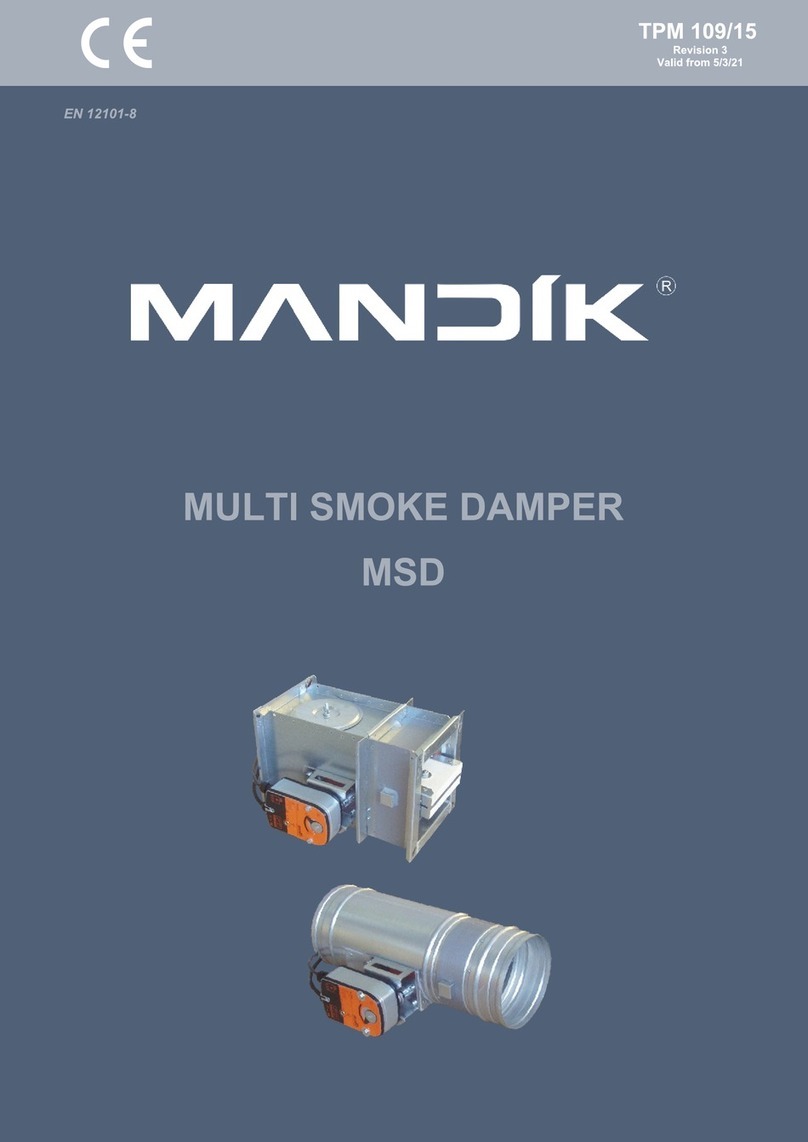
Fire damper BKP-EN
Technical documentation
Description
Construction subject to change.
No return possible! Version: 2020-09-01 | Page 3
DESCRIPTION
Fire dampers built into ventilation ducts (air-conditioning sys-
tems) are used for the automatic locking of fire lobbies.
The fire damper BKP-EN conforms to EN 15650, EN 13501-3
and EN 1366-2.
The BKP-EN has been tested according to EN 1366-2 in com-
pliance with Declaration of Performance No. DoP-BKP-EN-
2020-09-01. Its classification according to EN 13501-3 is EI 90
(ve, ho i↔o) S to EI 120 (ve, ho i↔o) S.
According to Directive 2014/34/EU, EC Certificate of Conform-
ity Number EPS 13 ATEX 2 610 X, its use in areas subject to
explosion hazards is permitted, not only with spring return ac-
tuator ExMax-5.10-BF (X10 - X15), including safety tempera-
ture limiter (FireSafe or ExPro-TT), but also with mechanical
trigger via fusible link (manual actuation with
or without ATEX limit switch ES-Ex). The fire damper is marked
as follows according to ATEX:
*) when using the safety temperature limiter FireSafe.
The national standards and guidelines must be observed in
connection with this technical documentation "Installation,
mounting and operating instructions". Further information on
ATEX can be found in the additional BKP-EN operating instruc-
tions according to ATEX 2014/34/EU.
For functional test, service, retrofitting, etc., inspection open-
ings must be provided on site in suspended ceilings, shaft
walls, connected ventilation ducts, etc., if necessary. They
must be built in in sufficient numbers and sizes and must not
impair the functioning of the fire dampers.
The fire dampers must be connected to the ventilation system
by means of ventilation ducts either on one or on both sides.
When connected on one side, finishing protective gratings
made of non-flammable building materials (EN13501-1) must
be provided on the opposite side. The fire dampers can be
connected to non-flammable and flammable ventilation ducts
as well as to flexible spigots.
Housing made of galvanised sheet steel.
optionally (at an extra charge):
Housing made of stainless steel material no. 1.4301
Housing with DD coating (two-component
top coat based on polyurethane varnish) inside/out-
side (replaceable, non-coated parts are made of
stainless steel material no. 1.4301)
Moulded connection flanges with centre hole or three
equidistant holes on the B side (from B ≥ 200 mm), corner
angle with long hole for simple duct mounting and high
stability
Shut-off damper made of silicate board
optionally (at an extra charge):
DD coating (RAL 7035 / light-grey)
Cold and hot leakage requirements according to
EN 1366-2 are met by means of circumferential rubber
and intumescent seals.
Horizontal position of the damper blade axle
The installation position is independent of the air flow di-
rection.
Thermal trigger via fusible link 72 °C or 98 °C
optionally (at an extra charge):
with electrothermal trigger devices (with spring re-
turn actuators)
with an inspection opening on the B side (bottom), from
B ≥ 200 mm.
Use: max. operating pressure of 1000 Pa at vstirn ≤ 10 m/s
Housing leakage class C according to EN 1751
Use or connection of a smoke trigger device with general
building supervisory approval (e.g. SCHAKO smoke detec-
tion system RMS, see technical documentation smoke de-
tection system RMS) in connection with suitable electric
trigger devices of the fire damper is possible; only trigger
devices working by the "currentless closed" principle may
be connected to the RMS system; the propagation of fire
and smoke is effectively prevented and the requirements
of the Model Building Regulation (MBO) are fulfilled. Op-
timal integration into the building control system by
means of the SCHAKO EasyBus signalling and switching
bus system (see technical documentation EasyBus) or the
SCHAKO fire damper mini-controller BKSYS (see technical
documentation BKSYS).
ATTENTION
Building installations must be, among other things, erected,
modified and maintained in a way to prevent the formation of
fire and the propagation of fire and smoke (propagation of
fire) and to allow, in the event of a fire, human beings and
animals to be rescued and effective extinguishing work to be
carried out.
Smoke propagation through the air-conditioning and ventila-
tion system can be prevented for example by means of fire
dampers and spring return actuators in combination with ap-
proved smoke detector devices (e.g. SCHAKO smoke detec-
tion system RMS).
II 2 G Ex h IIC T6 Gb
II 2 D Ex h IIIC T80°C Db
II 3 D Ex h IIIC T80°C Dc
*)
EPS 13 ATEX 2 610 X

